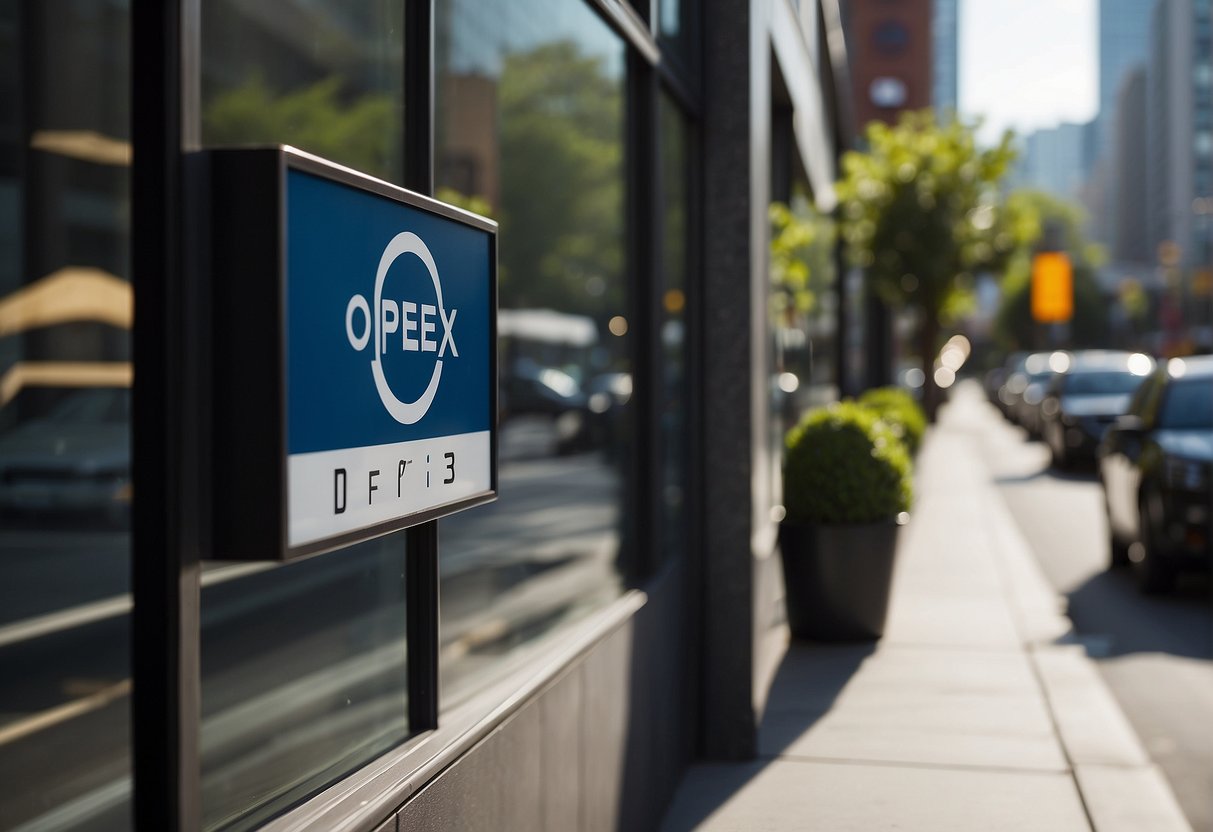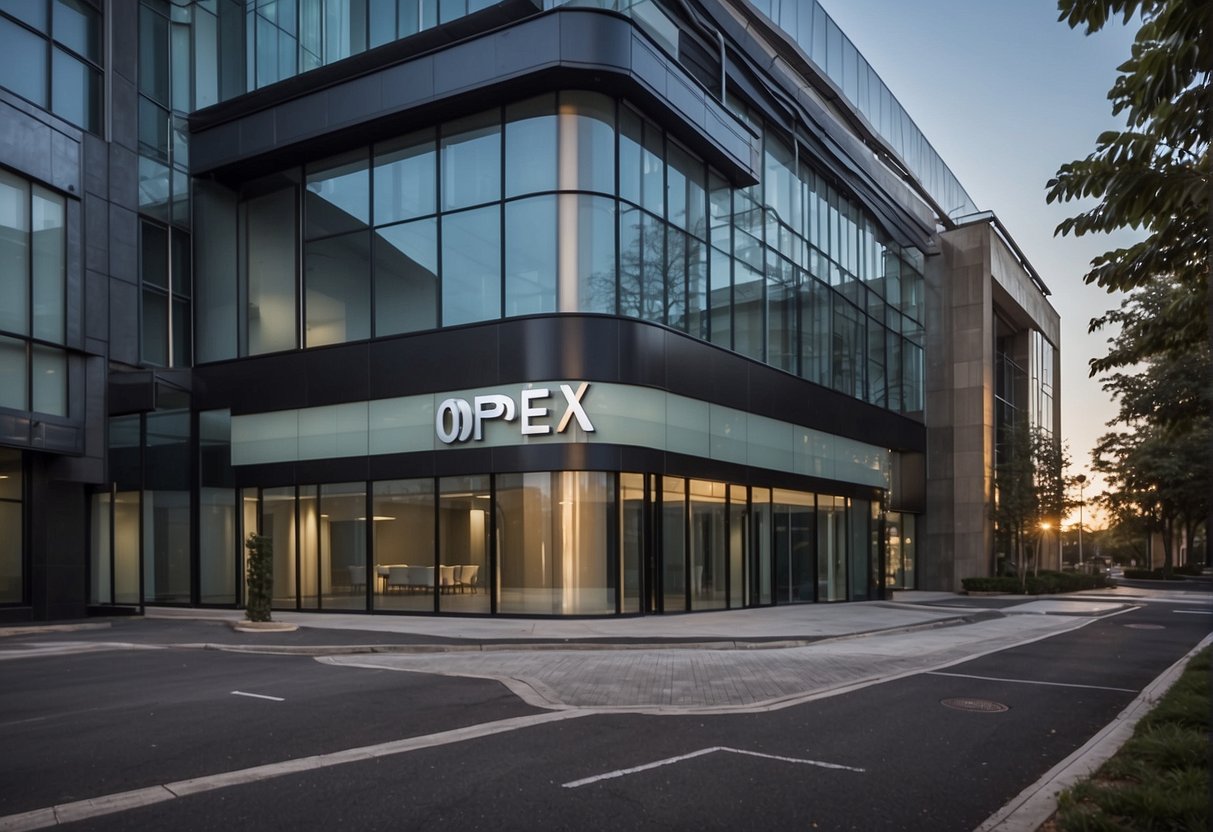Operating expenses, often abbreviated as OpEx, are essential considerations in the field of real estate. They encompass all ongoing costs required for the maintenance and operation of a property. These expenses are a critical part of the financial dynamics of real estate and are factored into the profitability analysis and pricing strategies of both residential and commercial properties.

In commercial real estate, OpEx is the sum of costs linked to the running and upkeep of income-generating properties and can include property management fees, maintenance, insurance, and utilities. Comparing OpEx with capital expenditures (CapEx) is vital for investors, as these two types of expenses affect the cash flow and tax treatment of real estate investments differently. Understanding how to calculate and optimize OpEx is imperative for maximizing the profitability and operational efficiency of properties.
Key Takeaways
- OpEx encompasses the recurring costs for maintaining and operating a real estate property.
- Understanding and optimizing OpEx is critical for real estate profitability.
- OpEx must be analyzed in contrast with CapEx to appreciate its impact on financial performance.
Understanding OpEx in Real Estate
In real estate, Operating Expenses (OpEx) represent the costs associated with managing and maintaining a property. These expenses are ongoing and necessary for the continuous operation of the real estate asset.
Key Components of OpEx:
- Utilities: Includes water, electricity, gas, and any other utility services.
- Repairs and Maintenance: Regular upkeep to ensure the property remains in good condition.
- Insurance: Protection against property damage and liabilities.
- Property Management: Fees paid to property managers for day-to-day operations.
- Property Tax: Taxes imposed by the local government.
Differentiating Factors:
Operating expenses are distinct from capital expenditures (CapEx), which are long-term investments aimed at increasing the property value.
Lease Considerations:
Tenants must understand how OpEx impacts their lease agreement. In a triple net (NNN) lease, common in commercial real estate, tenants bear the cost of OpEx in addition to their base rent.
Importance:
The management of OpEx is crucial for property owners as it affects the net income and, consequently, the investment’s profitability. A lower Operating Expense Ratio (OER) – the comparison of operating costs to income – indicates more effective cost management and a potentially more lucrative investment.
By accurately accounting for operating expenses, stakeholders can assess a property’s true performance and make well-informed investment and management decisions.
Components of Operating Expenses

Operating Expenses (OpEx) in real estate encompass all costs related to the day-to-day operations of a property. These expenses are critical for maintaining the functionality and value of the property.
Property Taxes
Property taxes are a significant portion of OpEx, calculated based on the assessed value of the real estate. These taxes contribute to municipal and local government funding and are subject to change.
Insurance
Property insurance shields owners from financial losses related to damage or liability claims. Costs vary depending on the property’s location, value, and coverage scope.
Utilities
Utilities account for electricity, water, gas, and other essential services needed to maintain a property’s operations. These costs fluctuate with usage and rates set by providers.
Repairs and Maintenance
Regular maintenance ensures a property remains in good condition and preserves its value. This includes:
- Landscaping: Keeping outdoor spaces groomed and presentable.
- Janitorial Services: Ensuring cleanliness of the interiors.
- Repairs: Addressing wear and tear such as paint, fixtures, and structural elements.
Management and Leasing Fees
Property management entails the oversight and administration of the real estate. Management fees often cover:
- Marketing: Promoting the property to potential tenants.
- Management: Day-to-day operational tasks, including tenant interactions.
- Leasing Fees: Costs associated with securing tenants and managing lease agreements.
How OpEx Impacts Profitability

Operational Expenditures (OpEx) significantly affect a real estate property’s financial performance by influencing both net operating income and cash flow, key indicators of profitability.
Net Operating Income (NOI)
Net Operating Income (NOI) is a critical metric in real estate that represents the property’s profitability before financing and tax considerations. It is calculated by subtracting Operating Expenses from Gross Income. NOI serves as the foundation for valuing real estate investments and is directly impacted by OpEx.
- Gross Income: Total income generated from the property, primarily through rental income.
- Operating Expenses: Necessary expenditures to maintain and manage the property, including property management fees, maintenance, and repairs.
The formula for NOI is as follows:
NOI = Gross Income – Operating Expenses
Maintaining a low operating expense ratio enhances NOI, thereby increasing the property’s profitability.
Cash Flow Considerations
Cash flow, the net amount of cash moving in and out of a real estate investment, is essential for an owner’s budget and the property’s financial health.
- Positive Cash Flow: Occurs when the property’s income exceeds its operating expenses.
- Negative Cash Flow: Results when operating costs surpass the income generated.
Solid management of OpEx is vital for generating a robust cash flow, which, in turn, affects the ability to reinvest in the property or service debt. By minimizing unnecessary expenses without compromising the quality of operation, investors and owners can achieve a balanced budget that supports a sustainable cash flow and contributes to the overall revenue, ultimately ensuring long-term profitability.
OpEx Versus CapEx
Understanding the differences between Operational Expenditures (OpEx) and Capital Expenditures (CapEx) is crucial for real estate investment and accounting practices.
Operational vs. Capital Expenditures
Operational Expenditures or OpEx refer to the ongoing costs associated with the day-to-day functioning and maintenance of a property. These expenses are incurred to keep the property operational and include:
- Utilities
- Property management fees
- Routine maintenance
- Repairs
On the other hand, Capital Expenditures or CapEx represent the significant investment in the property that either enhances its value or extends its life. Capital expenditures include:
- Purchase of a new property
- Major renovations
- Upgrading building systems (e.g., an HVAC system)
- Structural repairs that go beyond daily maintenance
Depreciation and Useful Life
Depreciation is an accounting method used to allocate the cost of a tangible asset over its useful life. For Operational Expenditures, depreciation is not a consideration as these costs are fully expensed in the period they’re incurred. In contrast, Capital Expenditures are capitalized and depreciated over the lifespan of the improvement, reflecting their lasting benefit to the property.
| Expenditure Type | Depreciation |
|---|---|
| Operational | Not applied |
| Capital | Applied over asset’s useful life |
Major Renovations and Repairs
Major renovations and repairs often fall into the CapEx category when they materially extend the life of the property or increase its value significantly. Examples might include:
- Replacing the entire roof
- Overhauling the building’s electrical system
- Adding new facilities, such as a gym or conference room
These capital expenses contrast with repairs and maintenance under OpEx, which do not significantly increase the property’s value or extend its lifespan, such as painting walls or fixing leaks.
Calculating Operating Expenses
In the realm of commercial real estate, understanding and calculating operating expenses is essential for both landlords and tenants in properly assessing the costs involved with a property.
Common Area Maintenance (CAM) Fees
Common Area Maintenance (CAM) Fees are costs incurred for maintaining areas used by all tenants of a multi-tenant property. These costs typically include janitorial services, property management fees, and landscaping. Calculating the exact CAM fees for a tenant involves determining the tenant’s pro-rata share, which usually correlates to the percentage of the property they occupy.
- Pro-rata Share Formula:
Tenant's square footage / Total leasable square footage
Example:
If a tenant occupies 5,000 sq. ft in a 100,000 sq. ft building, their pro-rata share is:
5,000 sq. ft / 100,000 sq. ft = 5%
The tenant then pays 5% of the total CAM fees.
Expense Caps and Negotiations
An expense cap, particularly in a triple net lease, can protect a tenant from escalating operating costs. Expense caps set a limit to the amount an operating expense can increase annually. These caps can be cumulative, allowing unused increases to roll over to subsequent years, or non-cumulative, meaning any unused increase is forfeited.
- Types of Caps:
- Cumulative Cap: Unused budget increase can be applied to future years.
- Non-Cumulative Cap: Unused budget increase is lost and does not accumulate.
Negotiating expense caps is crucial for budgeting as it offers predictability in operating costs. Tenants should negotiate caps at the onset of the lease and ensure they are clearly stated within the lease agreement. Landlords must balance the caps to ensure they can cover the property’s operating expenses while remaining fair to tenants.
Optimizing OpEx for Commercial Real Estate
In commercial real estate, strategically controlling operating expenses is crucial for maintaining cost-efficiency and maximizing revenue.
Minimizing Costs and Maximizing Revenue
Commercial property managers can minimize costs through efficient management and operations. Negotiating vendor contracts for services such as maintenance and cleaning can lead to volume discounts and more favorable terms. Regular review of inventory costs and payroll expenses ensures that expenditures are aligned with current norms and market rates. Property owners should assess insurance costs to ensure adequate coverage without overpaying, thus optimizing the cost-benefit ratio.
Lease Structure Strategies
The lease structure greatly influences how operating expenses (OpEx) affect both landlords and tenants. In a triple net (NNN) lease, tenants are responsible for a proportionate share of the property’s OpEx, including maintenance, insurance, and taxes. This can incentivize tenants to use resources more efficiently, as their costs are directly impacted. Conversely, full-service leases may include all or most operating expenses, providing a fixed cost for tenants but requiring landlords to closely manage expenses to avoid shrinking profit margins. Effective lease structuring is a balancing act that maximizes revenue while maintaining competitive appeal for tenants.
OpEx in Different Real Estate Markets
Operating Expenditure, or OpEx, in real estate refers to the ongoing costs associated with the management and operation of a property. These costs can vary across different real estate markets due to regional economic factors, property types, and market conditions.
In the commercial real estate market, OpEx is a key consideration for both property owners and real estate investors. Common OpEx for commercial properties, such as office buildings or retail centers, include:
- Maintenance and repairs
- Utility expenses
- Property management fees
- Insurance
- Property taxes
These expenses differ based on local tax rates, the cost of living, and the demand for services.
For the residential market, OpEx includes similar costs but can often be lower due to the scale and nature of the properties. Real estate investors must analyze local market conditions to estimate these operating costs accurately, as they directly affect profitability.
Rent structure also influences OpEx. In some markets, like Austin, tenants under triple net (NNN) leases may bear the operating costs, transferring the expense risk from the owner to the tenant. In contrast, other markets may include operating expenses in the gross rent, simplifying expense management for tenants.
Different real estate markets can further subdivide into classes, such as Class A, B, and C, each with distinct OpEx profiles. Class A properties, typically high-end with premium amenities, incur higher operating expenses, while Class B and C properties, serving a more cost-conscious segment, attempt to moderate these costs.
In the real estate industry, understanding OpEx across various markets is essential for investors and managers to maintain profitability and competitive pricing.
Case Studies: OpEx in Action
In evaluating the effectiveness of Operational Expenditure (OpEx) strategies in real estate, examining real-world scenarios can provide valuable insights. These case studies focus on the impacts of operating expenses on property performance and investor decision-making.
Comparative Analysis of Properties
Property A and Property B are two commercial real estate assets with distinct OpEx profiles, providing a basis for comparative analysis. Both properties generate similar annual rental incomes, but diverge in how they manage operating costs, thereby affecting their net operating income and cash flow.
-
Property A:
- Gross Rental Income: $500,000
- Operating Expenses:
- Utilities: $40,000
- Maintenance: $25,000
- Property Management: $50,000
- Insurance and Taxes: $85,000
- Total Operating Expenses: $200,000
- Net Operating Income (NOI): $300,000
-
Property B:
- Gross Rental Income: $500,000
- Operating Expenses:
- Utilities: $30,000
- Maintenance: $20,000
- Property Management: $45,000
- Insurance and Taxes: $75,000
- Total Operating Expenses: $170,000
- Net Operating Income (NOI): $330,000
The Operational Expenditures for both properties include utilities, maintenance, property management fees, as well as insurance and taxes. However, Property B’s lower expenses highlight a leaner approach to operations.
Through efficient management and cost-saving measures, Property B increases its cash flow by reducing unnecessary expenditures. Despite identical gross income, the lower OpEx contributes to a higher NOI for Property B, making it a more attractive option for investors. Tenants also benefit from the property’s well-balanced cost structure, which can lead to competitive leasing rates and better retention.
This comparative analysis emphasizes the significance of diligent management of operating expenses in real estate. It showcases how properties with similar income potential can yield different financial results based on their OpEx strategies, impacting both investor returns and tenant satisfaction.
Frequently Asked Questions
Understanding Operating Expenses (OpEx) in real estate involves recognizing how they’re calculated, differentiated from lease types, and comprised within investment assessments. Operating Expense Ratio (OER) plays a vital role in evaluating real estate investment decisions.
How is Operating Expense (OpEx) calculated in commercial real estate?
In commercial real estate, OpEx is calculated by summing all the expenses incurred to operate and maintain a property. This includes costs such as utilities, repairs, maintenance, insurance, management fees, and property taxes.
What distinguishes Operating Expenses (OpEx) from Net Net Net (NNN) leases?
Operating Expenses relate to costs involved in the running of a property, whereas Net Net Net (NNN) leases are a type of lease structure where the tenant is responsible for paying these operating expenses on top of their base rent.
What are the typical operating expenses included in real estate investment calculations?
Typical operating expenses in real estate encompass utilities, maintenance, insurance, property management, exterior work, and property taxes. These are essential costs required to keep the property functional and compliant with regulations.
How does Operating Expense Ratio (OER) affect real estate investment decisions?
The Operating Expense Ratio, which is the ratio of a property’s operating expenses to its income, affects investment decisions by indicating the efficiency of a property’s operations. A lower OER suggests a more cost-effective property, which could potentially yield higher returns.
What is considered a good Operating Expense Ratio for commercial real estate?
A good Operating Expense Ratio for commercial real estate typically depends on the type of property and the market conditions, but in general, a lower ratio indicates a more efficiently operated property which may be more favorable for investors.
How can investors effectively estimate operating expenses for a real estate property?
Investors can estimate operating expenses by analyzing historical expense data of the property, comparable properties in the area, and projected costs for maintenance, insurance, utilities, property management, taxes, and other fees associated with property upkeep.

